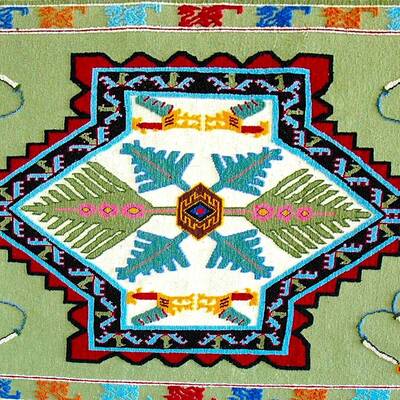
Kelim of Harsin
Kelim is a hand woven that is produced on looms and without the use of knots. It has long been used as a floor covering and is among handicrafts of village or nomadic people of Iran. Harsin city in the province of Kermanshah is one of the most important centers of Kelims weaving in Iran and its hand woven products are internationally known with the same name.
One of the reasons that many men and women of Harsin take up making Kelims is that animal husbandry is very common between the families and very high quality wool is produced in Kermanshah and surrounding cities. This provides one hundred percent natural material which has become a specific trait of Harsin Kelims. There are some similarities between Haesin Kelims and Shiriki Pich of Sirjan which makes it possible that they have affected each other in time. But Harsin Kelims are double-sided and its backgrounds are usually dark blue or red. Other colors such as white, green, crimson red can be seen too.
Geographically, Harsin is located in the south of the ancient city of Kangavar. Reviewing reliefs of surrounding archeological sites proves that Kelims and their attractive motifs were created in Harsin from at least two hundred years ago. The motifs are made from memory and have passed from a generation to another, and can be divided into four groups: 1. figurative 2. animals 3. floral 4. objects. They have their own local name and are completely inspired by the natural environment and habitat of Harsin.
The weavers use these inspirations and incorporate them into abstract designs so that they can be applied in Kelims. Among the figurative motifs, we can find Cham or Chashm (eye) that is used as a talisman, Dast o Nav Dast (hand in hand) that is a symbol of union and friendship and Bovi (doll) that is a symbol of protectors of the family, home and city. Animal motifs are abstract design of ducks, butterfly, cat claw, rabbit, jackal, scorpion, sparrow and snake and etc. Today Harsin Kelims can be found not only in this city, but also in Gilan Gharb, Eslamabad-e Gharb and Javanroud.
